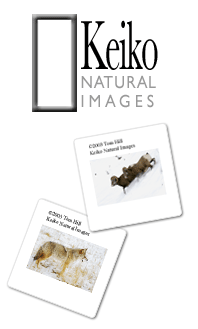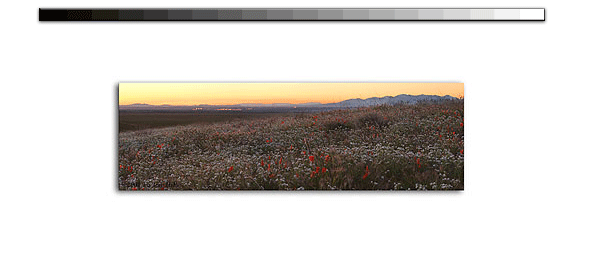|
The inevitable question with my photography is how did you do that? Then after giving the technical details the second inevitable statement is made oh, that means the picture isnt real? What Im talking about is what a photographer takes for granted producing his image/vision and how his viewers might interpret that. This subjectadjusting an image to match a vision--is a whole can of worms that could take forever to fully discuss. So, well leave the discussion concentrated on how your artistic vision fits within the whole genre of nature photography.
First, lets talk about vision a bit. If you havent figured it out, the only way to make consistently great images is to know what you want before you actually push the trigger. That means seeing the result before hand. This is easier said than done. I dont think anyone has an argument with that. The point here is pre-visualization is a necessary ingredient to in order to make images consistently have any form of interest. Eventually, a consistent vision will also create a unique and particular style. Having your own recognized style is about the most important goal of any fledgling photographer. But, I digress&
So, youre saying, How do I get the vision thing. I think the process is kind of simple--maybe not that easy but the idea is really simple. All you have to do is be honest. Its that simple. Im talking recognizing the tiny little things that excite you. Its being able to break a scene down to its basic elements and seeing the individual parts that are attractive. Obviously, youre the key ingredient in this whole thing and whatever attitude you bring to the equation will affect what youre seeing. Still, determining what drives you to a scene or attracts you to a situation is the name of the game. Also, its a never-ending fleeting learning process. It takes forever to get it and when you finally do, youll loose it if you stop to think about it.
How do I work this vision thing practically speaking? Lets use a landscape situation for this example. In this case, I was driving down the road in Jasper NP when I noticed the aspens. Id already driven by the location about a million times and it the image didnt hit me until this particular time. Maybe the light was just right. I havent a clue but something made me turn around, park the car and get out the gear. I didnt know what I wanted but I knew there was an image waiting for my discovery. I guess it was all instinct getting me to stop in the first place. I surveyed the scene and noticed the serene connection between the grass, flowers, and trees. I liked the contrast without a lot of bright highlights or extremely blocked shadows. It was all very subtlewhich Im very attracted to by the way. The trees provided a very physical anchor/foundation to keep the viewers eye from wondering around. Someone told me once having an anchor is one of those important elements every images needs to have. So, I decided upon a composition and adjusted the exposure to maintain those basic elements. The greatest challenge was making sure the exposure was just right. I didnt apply any filtering our post processing manipulation to get what I needed. The image was simple to design and simple to execute. I guess thats it real appeal in the end.
The next example required a bit more work. This location was at the local provincial park in Cold Lake, Alberta. Id been to the location about a million times and have dozens of images from there. I knew what I wanted even before arriving. It snowed the previous night and the lake had just frozen with a few water spots here and there that steamed in the minus zero weather. The sun was just rising and I knew the colors were going to be what I wanted. I like the scene because of the subtletheres that subtle word again--nature of the snow and the rocks but the sky was a big detractor. It was too bland. It was so bland it seemed to divert attention away from the very subtle texture of the snow. Cropping it out wouldnt work either because it would destroy the composition. I needed something to add a bit of punch to the sky without making it too far on the other side. I settled on a mauve filter to add a bit of color, which contrasted nicely with the snow and rocks. I didnt get to that conclusion my first try. I tried a one stop blue filter which was way too much. The mauve filter worked much better. In this case, I new what I wanted and only needed to tweak things to enhance the end result. The point here was I had a great idea of what I wanted before pushing the trigger. I only needed to tweak the technical details before actually making the image.
Now were getting to the problem at handthe validity of image manipulation with nature photography. Obvious, applying the mauve filter to the last example applied a quality that didnt exist before. Purists that believe nature photography should only use the elements that nature provides in their images I think are missing the boat with respect to the artistic aspects of nature photography. Clearly impressive events occur in nature that are only fully interpreted in our own minds eye. Im kind of saying those sunsets are beautiful because your mind said they were. The sunset certainly wasnt saying look at me, Im beautiful. You and your brain were deciding what was wonderful and what wasnt. You and your brain are physically interpreting a scene as it receives its inputs.
In many ways, your brain may be eliminating or even accenting elements of the scene while its in that interpreting mode. A simple example is consider an accident scene witnessed by five people. Each one of that witness will provide simple details from their experience of the incident. Even if they were standing from the same perspective, those details will change from one witness to another. An auto racer may recognize things from a drivers perspective and be able to explain where his hands were and how he was driving. A musician may be able to provide the sounds and have no clue about the driver. A fashion consultant may report on the drivers clothing and totally be oblivious anything else. The point is, we have a complex human computer sitting on the top of our shoulders and getting a consistent positive response from your audience, requires a bit more than pointing your camera and recording the antiseptic color frequencies of a given scene. A lot more is needed and thats the reason why you and your vision are involved. Youre there to find the element thats so awesome and then do everything in you power to enhance that characteristic so its obvious to your viewer. In my book, the artistic point of nature photography is all about how you enhance that characteristic.
By the way, Im just scratching the surface of the how humans interpret the world. Another point to ponder is nothing we do is static. Everything is perceived with active inputs from a variety of sources such as taste, feel, hearing, and emotions. The list is endless. Just follow the hypothesis. I dont have enough room in this article to explain the whole idea except to explain the bottom-line--emotional interpretations of the world with photography is impossible if you just snap pictures. The emotion you feel when seeing a wonderful sunset, a beautiful rainbow, or dramatic thunderstorm isnt easily duplicated in the two-dimensional format indicative of photography. That means extra effort has to be made to capture that particular emotion or aspect that otherwise might be easily lost in the static nature of photography.
|
|
|




